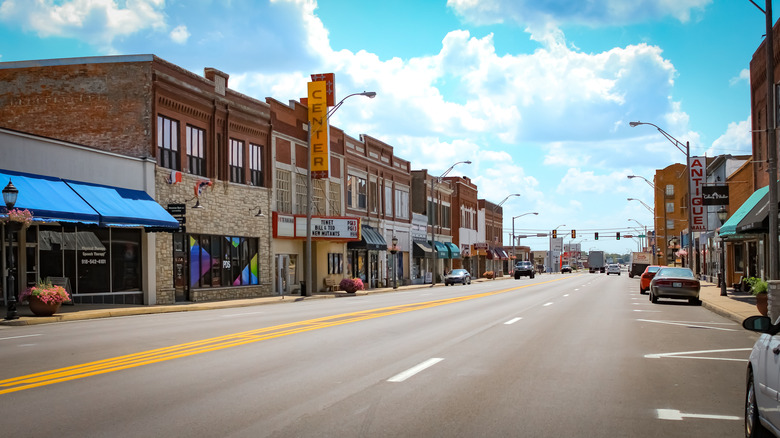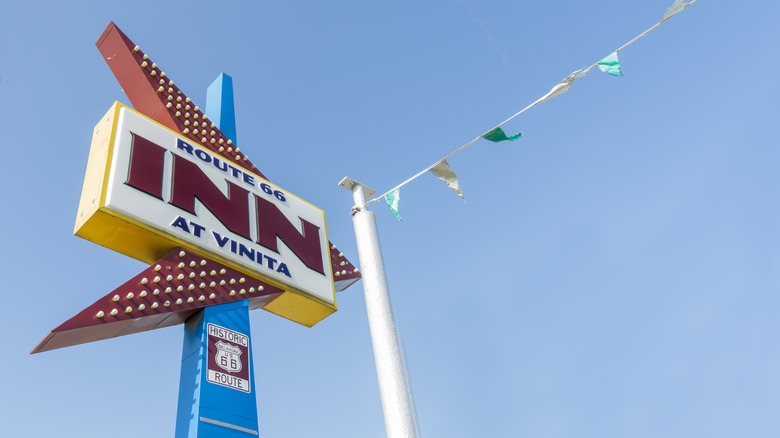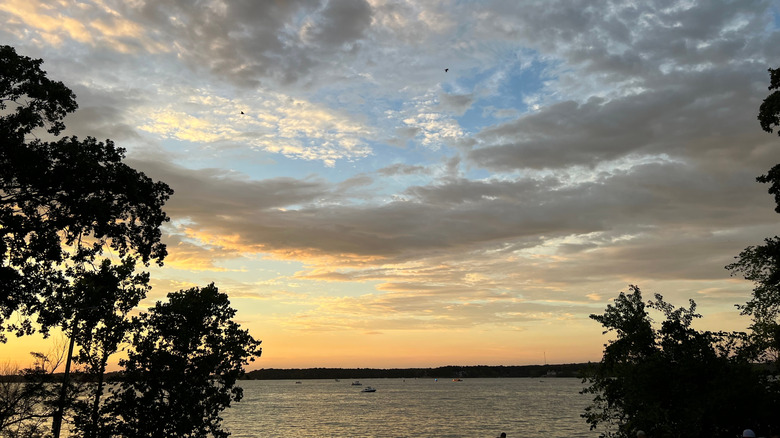
Lost amidst a typically homogenous rural Oklahoma landscape of plains and prairies, the land around Vinita stretches as a flat, sprawling runway of wild grass, ferns, and flowers in every direction, with few distinguishing features beyond the occasional gentle mound or undulating slope. Aside from the occasional mountainous scenic byway to the west, most of the terrain around Vinita only begins to shift meaningfully when it meets water — Oologah Lake to the west and the majestic contours of Grand
Lake O' the Cherokees to the east. Or 70 miles southwest, where Tulsa rears up, a city whose very form and spirit remain unmistakably shaped by its storied past as the oil capital of the world.
Though Vinita is a serene, if rather simple, city of lake stays that carries with it much Native heritage, this second-oldest city in Oklahoma, after Fort Gibson, is perhaps best known as a quirky Route 66 stop. This legendary American highway, stretching from Chicago to Santa Monica and passing through eight states, was popularized and mythologized in a slew of 20th century novels and movies.
Read more: The Most Charming Cobblestone Streets In America That Will Take You Back In Time
Vinita And Its Route 66 Connection

Stretching 2,448 miles, Route 66 offers ample opportunity to explore a mix of quirky attractions — like those found in the bustling route stop in Springfield, Illinois — and chilling, more haunting landmarks like those in Arizona. Of the 400 or so miles that cut through Oklahoma, the stretch running from Miami through Vinita and down toward Tulsa is especially rich in roadside landmarks and tidbits of local history.
Following this same southward trail, you'll come across the McDougal Filling Station. Built in 1940 by Grace and George McDougal, it was designed to look like a minuscule house. Its almost Swedish deep-Falu roof coloring, and patchwork of multicolored sandstone creates a look that's nearly animalistic in pattern and likeness. Then there's the Will Rogers Archway, built in 1957 as the world's largest McDonald's, its design famously spanning the highway. It was refurbished and reopened in 2014, named after "Oklahoma's Favorite Son" — the American-Cherokee actor and performer.
Though a more modern addition to the legend of Route 66, if you retrace your steps a bit to the original roadway, you'll come across the Sesquicentennial Mural at the intersection of S. Wilson St and W. Illinois Ave, depicting the history of Vinita over the past 150 years. A work by Jessica S. Stout, it's 42 feet long and 20 feet high. Further along, you can't miss the Route 66 Inn with its iconic neon motel sign. Almost frozen in time — except for the pool out front — little has changed at this conveniently located stop. Further along still, 2 miles before the town of Big Cabin, you'll meet the ever-present 46-foot-tall Giant Statue of Chief Standing Brave, a proud symbol of Oklahoma with his highly detailed feathered headdress and the Oklahoma state flag on his shield.
Access, Stays By The Lake, And Native Indian Heritage Exploration

For those not interested in driving and more drawn to a laid-back lakeside stay or cultural excursion, Vinita is served by both Tulsa International Airport, 50 miles southwest, and the Vinita Municipal Airport, a 5-minute drive from the city center.
Much like Nebraska's Indian Cave State Park, named in tribute to Indigenous forebears, Grand Lake O' the Cherokees and Lake Oologah sit deep in Native territory and remain top outdoor destinations in Oklahoma. Both lakes offer modern campgrounds and RV parks with easy access to fishing, swimming, boating, and a full range of recreational activities.
For those looking to connect with the region on a more cultural level, the Cherokee Nation Anna Mitchell Cultural and Welcome Center delivers a rich, immersive experience. This dynamic space offers travelers the chance to engage with the art, history, and culture of the Cherokee people through exhibitions, artifacts, and deeply personal storytelling. A central theme in the exhibit is the journey and resilience of the Cherokee Nation, including their history as formerly enslaved people who eventually secured their rights as tribal citizens. Deeply intertwined with the broader story of the United States and Oklahoma, the Cherokee were forcibly exiled in the 1830s from their ancestral homelands in the Southeast to what is now present-day Oklahoma, a process known as the Trail of Tears. Much more than a museum, this center doubles as a communal gathering place where local Cherokees meet for classes, events, and cultural exchange.
Ready to discover more hidden gems and expert travel tips? Subscribe to our free newsletter for access to the world's best-kept travel secrets.
Read the original article on Islands.












